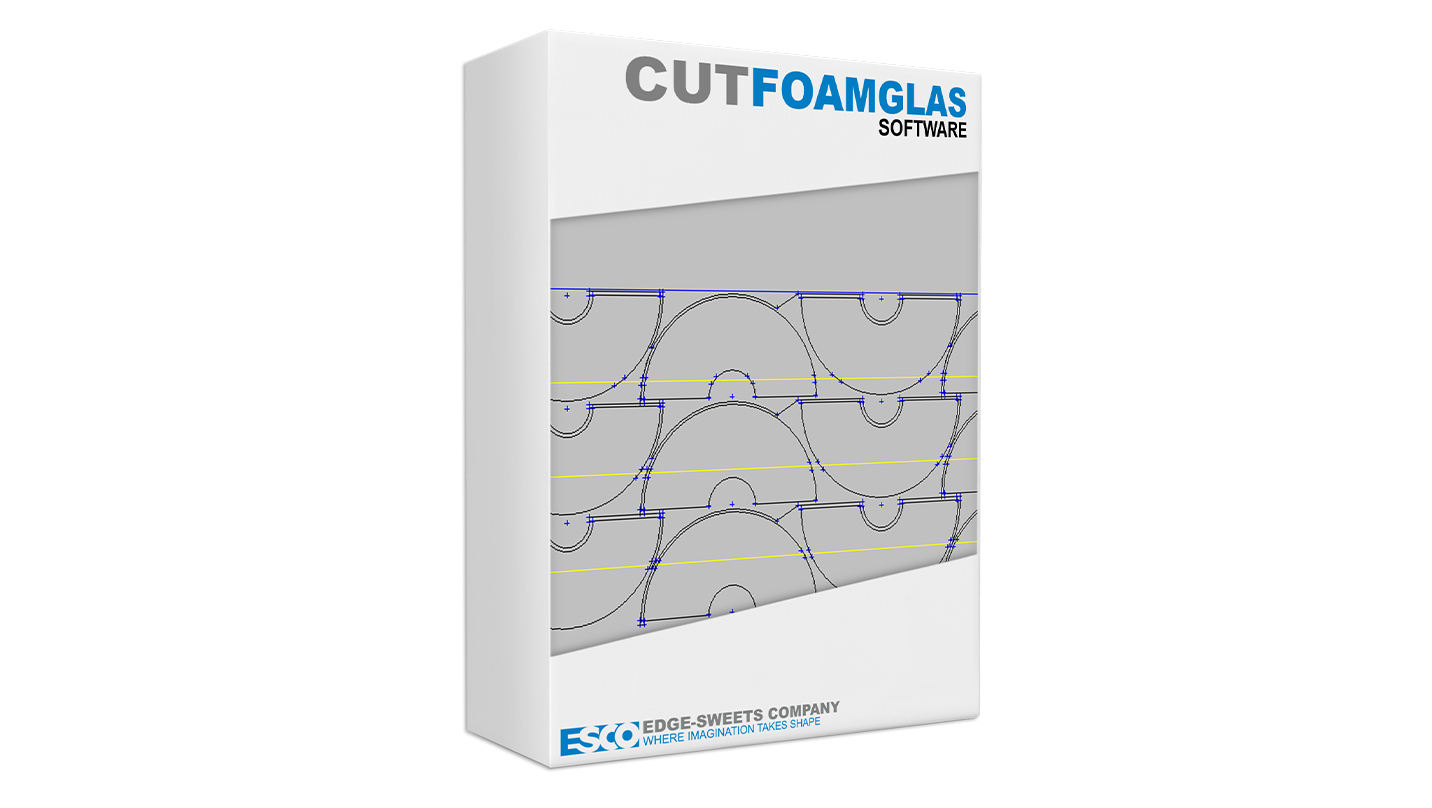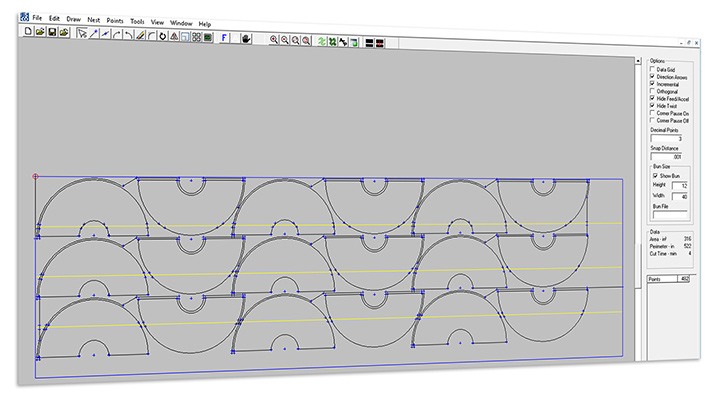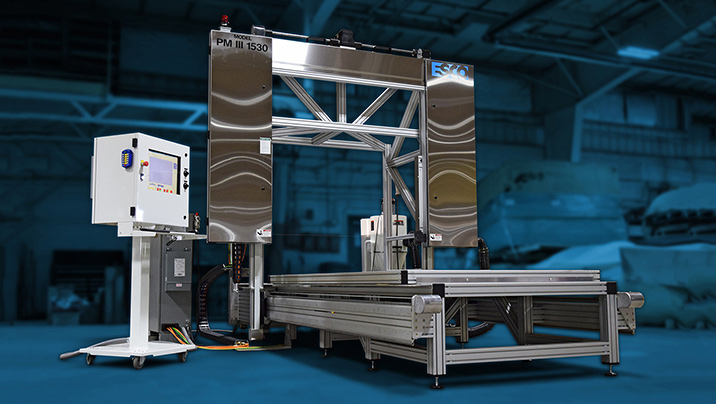Overview
Chances are that if you've heard the name Foamglas® before, you've used it or cut it for use in the pipe insulation industry. We have talked to many insulation fabricators around the world and one thing we found in common was that Foamglas® has been cut by hand for the past sixty years. Recently, however, Foamglas® Fabricators are jumping at the opportunity to automate this process and gain a competitive edge that is much needed in today's market.
How fast can I cut Foamglas®?
Ok, so we're finally at the difficult question. How fast can I cut this stuff? Well, that's a loaded question. Is your wire speed all the way up? Are your wheels fresh, or 6 months old? How many PSI do you have on your wire? Are you cutting long wide arcs, or short small ones? How wide is your machine? How much exposed wire?
For now we can only say it's not an exact science. The best thing to do is start it slow, and gradually speed up. If you are going too fast, and the wire drags, your pipe insulation will come out egg-shaped because it didn't fully cut the arc it was suppose to. The best thing to do is experiment and find out what speed will work for you.
Common Applications
Construction, Pipe Insulation
Why is Cutting Foamglas® a Challenge?
- Foamglas® is cellular gas, composed 100% of glass cells and heated in molds until melted. The glass is then cooled and crushed into a powder. This powder is again heated and the particles, combined with carbon black, form the end result of Foamglas® after being slowly cooled. Because of this process, Foamglas® is a closed cell structure, completely watertight, fireproof, and strong.
Why Use Foamglas®?
- Foamglas® is not the cheapest material, but its properties allow constructors to eliminate or minimize other layers of construction, such as moisture barriers and vapor retarders. Foamglas®'s strong structure also makes it usable in just about any environment or any location you need.
Cutting Foamglas® With The ProfileMatic III
- We've taken the time over the last 3-4 years to fine tune our horizontal wire saw to make it easier to cut through Foamglas®.
Let's take a moment to learn about the saw:
- The entire construction of the PM III consists of corrosion resistant and structurally sound Aluminum and Stainless Steel. This allows protection from the dust and vapors released from high performance rigid urethanes and other insulation materials.
- With profile cutting speeds of up to 480 inches per minute, this workhorse makes an easy job of cutting pipe insulation products such as Trymer, Mineral Wool, Foamglas®, Polyisocyanurate(PIR) of varying densities, EPS , XPS, PE, and of course flexible PU. Depending on the application, the ProfileMatic III can be configured in several widths and lengths, with many options to fit your individual needs. Some of those options are: turntables (round and square) (manual and programmable), vacuum tables, block hold down devices, and conveyors for loading and unloading.
- Optional Labeling system to print labels for parts/part stacks
How to cut Foamglas® on an abrasive wire bandsaw
- At first glance this seems simple, right? Plug in the values you want, and let it cut. However, because of the rigidness of the Foamglas®, if you're cutting on a horizontal wire saw like the PM III, gravity will always be an issue.
- Once you've cut through the top row of insulation, the parts you've just cut are typically going to fall. This means that if you spaced your parts close together to try and get more yield out of your bun, your next pass through is likely going to graze the bottom of the first row. The best way to solve this issue is to make sure you leave at least a part clearance of at least 3 times your wire diameter to ensure that any falling parts are not going to be cut again.
Cutting Foamglas® pipe insulation
- The most common parts to cut out of Foamglas® are pipe insulation. The properties of Foamglas® make it an excellent pipe insulator.
There are a few things to note, though:
- The path you use to cut your pipes out should be thought out and, as previously mentioned, Foamglas® is very rigid, so as it's cutting, the parts may fall. This is especially important while cutting through a part.
- Typically we recommend cutting the bottom of each section first. We assume you will have .25" to .75" of room on the top of the bun that this part won't be cut out from. This space is important because it leaves the part something to grab on to so it doesn't start falling right away. By cutting from the bottom, when the parts fall, or shift, it will not affect the cut of the part.
Cutting through Foamglas® joints with ESCODraw
- Again if you're familiar with Foamglas® you know that the end product, once manufactured, is a small slab. These slabs are often glued or joined together to make them into a bigger bun that parts can be cut out of. Common ways to join the slabs are asphalt, Hydrocal®, and StrataFab®.
- Once you have glue joints in your bun, you will need to get through a denser material than Foamglas® with your wire saw. This process is made easy with Edge-Sweet's EscoDraw software.
- The typical scenario you see is an operator standing at the machine and watching the wire go through, manually slowing down the machine as it approaches a joint, and speeding it back up once it's through. Not only is this frustrating, but that labor could be better spent elsewhere, perhaps unloading the previous bun.
- Edge-Sweet's has engineered a proprietary process that allows you to automatically slow down to a speed of your choice when approaching those joints. Simply enter in the joint distances (typically 6" apart) and our system will do the rest!





